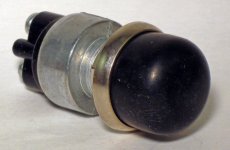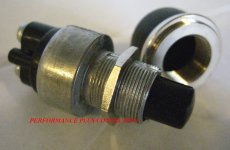That switch looks perfect. Can handle 60amps and has nice screws to attach a lug to. Either fuse type is fine. I went with 20 amp so it would be high enough never to blow starting the tractor but still bring in a bit of safety. It should be close to the battery. I bet the draw is quite a bit lower than 20 amps but can't be sure at this point. This would be my suggestion for the order: wire soldered to lug to go to battery, next soldered to fuse holder, then fuse holder soldered to lug to connect to one side of switch, soldered lug to the other side then wired down to the starter with the appropriate spade type female connector. I like to solder as much as possible using heatshrink to cover the splice and any bare connectors. Someone mentioned connecting to an existing fuse but that will be tougher to do and the fuse may not be rated high enough and may blow often. With a fuse you can remove it if you want and the tractor will not start accidentally. Good for when doing an oil change or if kids are around.
I'd still like to see it fixed the proper way and I bet you have it in you to do it but this will get you by. Changing the ignition switch and safety relay may do the trick but obviously not guaranteed. At least the bypass switch is much safer than what you are doing now to start the tractor.
I like the looks of the switch....clean and simple, like me

I am hoping to fix the starting problem the right way, but if it proves beyond my capabilities, I want to have "plan B" in my pocket and not have to wait around for UPS deliveries, etc. I buy online since the stores are so far away and diesel ain't cheap, nor is time (especially at my age LOL!).
I'm not sure what heat shrink is, but I'll do a search. I don't want to worry about a connection shorting out or coming lose. I'll likely get the spade type fuse since that's what the tractor uses and I have spares.
So, to install the fuse link, I use spade type connections that are soldered and protected? And you say lug, so I assume that is the donut style wire end? I will probably use 16 guage wire for all runs, so do I have to match that size with the inline fuse wire? I have some crimp-on ends...can they be soldered?
I sure do appreciate all the input you've given me! Like I said, if you were in Arizona, the coffee's on

P.S. no kids to worry about, just 3 horses and a really lazy chocolate Lab....



